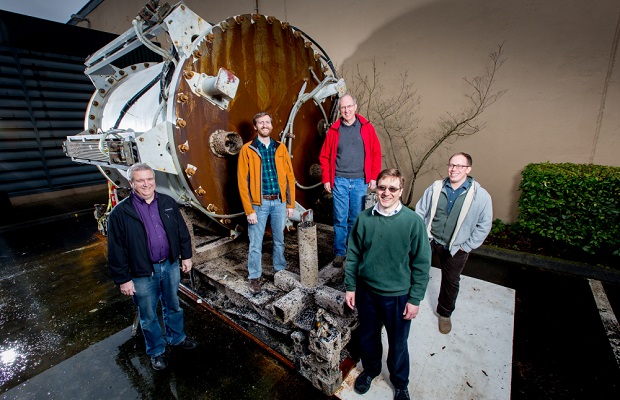Microsoft is heading underwater for its latest data centre, in a bid to tackle high energy costs and control the carbon footprint.

The prototype data centre is being tested hundreds of feet below the surface of the ocean in California
The ‘Project Natick’ scheme operated on the seafloor about 1 kilometer from the Pacific coast of the U.S. from August to November 2015, according to a Microsoft page on the project.
The data centre was on board a prototype vessel, named as the Leona Philpot after an Xbox game character.
Microsoft, which has designed, built, and deployed its own subsea data center in the ocean, in the period of about a year, started working on the project in late 2014, a year after Microsoft employee, Sean James, who served on a US Navy submarine, submitted a paper on the concept.
“Project Natick reflects Microsoft’s ongoing quest for cloud datacenter solutions that offer rapid provisioning, lower costs, high responsiveness, and are more environmentally sustainable,” the company said.
Data centres generate a lot of heat and require intense cooling from air-conditioning, failing which they may crash.
This costs IT & technology companies like Microsoft a lot of money in energy bills, besides being bad for the environment.
Submarine-like data centres, which could use tidal-fuelled turbines to generate power as ocean water is cooler than ambient air, could drastically bring down air-conditioning costs.

Using undersea data centers helps because they can serve the about 50 percent of people who live within 200 kilometers from the ocean. Microsoft said in an FAQ that deployment in deepwater offers “ready access to cooling, renewable power sources, and a controlled environment.” Moreover, a data center can be deployed from start to finish in 90 days.
A new trial is expected to begin next year, possibly near Florida or in Northern Europe, Microsoft engineers told the New York Times. The engineers even ran commercial data-processing projects from Microsoft’s Azure cloud computing service.
Recently, rival Facebook built a data center in Lulea in Sweden because the icy cold temperatures there would help cut the energy required for cooling.
A proposed Facebook data center in Clonee, Ireland, will rely heavily on wind energy locally available.
Meanwhile, Google’s data center in Hamina in Finland uses sea water from the Bay of Finland for cooling.
Read more about Project Natick here
